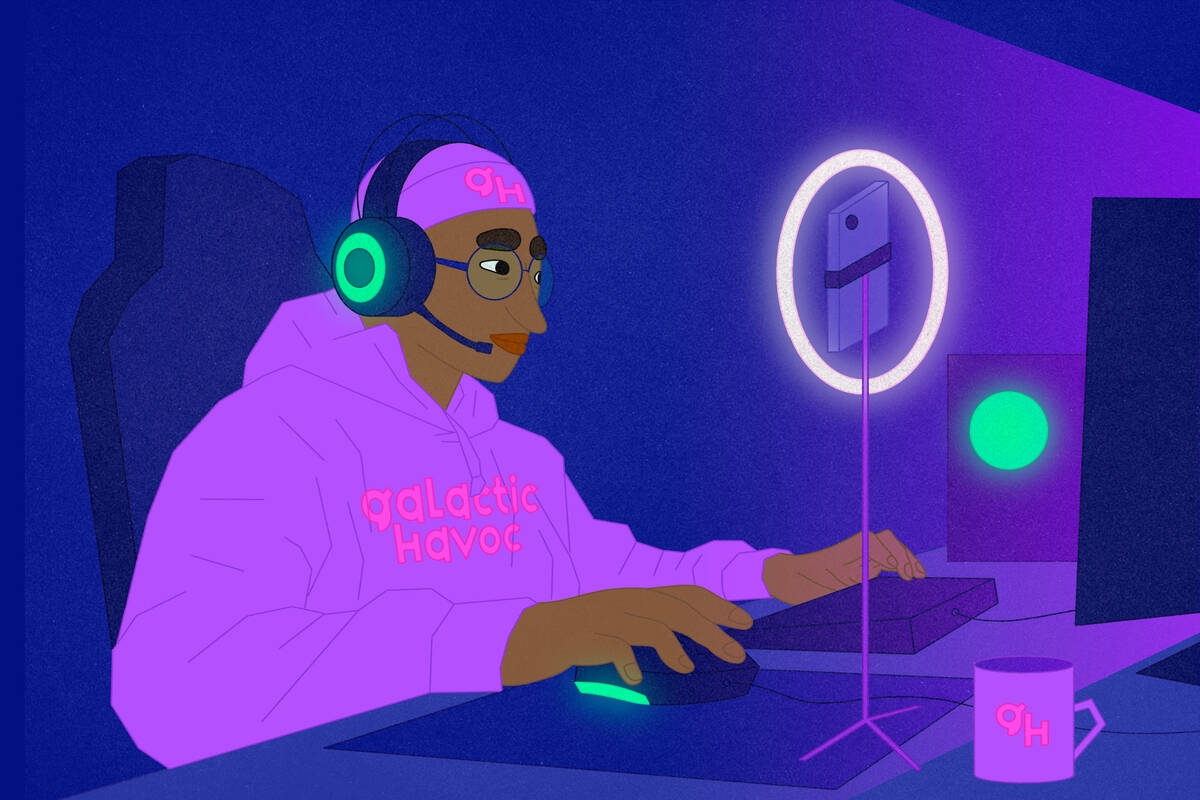Marketing May 14, 2024
Video-Game Companies Are Spending Big on Sponsored Streams. Are They Getting Their Money’s Worth?
Probably not—with a few notable exceptions.

Lisa Röper
If you’re a gamer—or know someone who is—you’ve probably spent time on Twitch, the popular video-game streaming service. From modest beginnings, the platform has blossomed into a major entertainment provider: during peak hours, as many as 6 million viewers tune in to watch their favorite streamers play video games and interact with fans in real time.
Figures like these have marketers paying attention—and opening their wallets. For game companies, sponsored livestreams are seen as an important way to build buzz and convince viewers to buy and play their games. A 2019 estimate from The Wall Street Journal suggested that publishers including Electronic Arts and Activision Blizzard have spent as much as $50,000 per hour to get Twitch’s top streamers playing their games; while that eye-popping figure is probably an outlier, it does indicate just how much companies value streaming promotion.
But is that money well spent?
Often not, according to new research by Ilya Morozov, an assistant professor of marketing at the Kellogg School. Morozov, along with Yufeng Huang of the University of Rochester, studied how sponsored and organic (that is, non-sponsored) streams translated into video-game usership and purchases.
Overall, it appears sponsored streams just aren’t worth what companies are paying for them. “For most of the games in our data, [sponsored streams] are not effective at all—the return on investment is deeply negative,” Morozov says.
There are a few exceptions, however. For instance, for little-known games from small developers, “influencer marketing can be a viable option and can generate large returns,” Morozov adds.
Understanding the effects of sponsored streams
Studying the effects of influencer marketing can be tricky because such campaigns usually run alongside other, unrelated promotional efforts. If sales of a product go up after an influencer posts about it, the increase could be attributable to the influencer—but it could also be due TV commercials running at the same time, or the product itself being particularly high quality, attracting word-of-mouth advertising.
“That’s the fundamental problem,” Morozov explains. “Is the influencer driving the effects, or would the effects have been there anyway?”
In the case of video games, the best way to isolate the effects of streaming promotion would be for streamers to broadcast themselves playing random games at random times of day. (Unlike YouTube, where prerecorded content reigns supreme, Twitch content is almost always live.)
“For most of the games in our data, [sponsored streams] are not effective at all.”
—
Ilya Morozov
In other words, if a streamer is consistently live at 6 p.m., and sales of the games they play increase at that time, it might just mean that 6 p.m. is a popular time to play video games. But if a streamer goes live on Monday at 6 p.m., Tuesday at 4 p.m., and Wednesday at 9 p.m., and sales increase at those specific times, it provides much stronger evidence that the streamer, specifically, is having an effect.
And fortunately for Morozov and Huang, that second scenario is pretty close to reality. Streaming is a full-time job for only a select few; most streamers are working around other commitments. “They go to university classes, they work part-time jobs, and then they come home and have a few hours to stream here and there,” Morozov says. Those sporadic schedules made it easy for the researchers to track any boosts in gameplay or sales that closely mirrored streamers’ broadcasts.
Measuring the ROI on streamer promotion
For their analysis, Morozov and Huang focused on the top 60,000 streamers on Twitch from May to December 2021, as measured by number of subscribers. Streamers are required to disclose when they are being paid to promote a particular game, which allowed the researchers to easily separate sponsored streams from organic streams.
To see how many people were playing a particular game at a particular time, they used Steam, the world’s largest online video game platform, which shows how many players are active in a given game at a given time. Sales data came from the media-measurement company Comscore.
Game companies don’t typically disclose exactly how much they pay streamers for promotion. However, the researchers were able to determine approximately how much the streamers in their dataset made per month from subscription fees and used this information to calculate their average approximate hourly earnings—around $144. Presumably, streamers would insist on at least this much for an hour of promotion. (The $144 figure is also consistent with estimates of sponsorship cost that circulate informally on message boards.)
The researchers checked in on their 60,000 streamers every ten minutes every time they went live during the five months of their sample period. They noted which game the streamer was playing and whether the stream was promoted or organic. Next, they matched this information to sales data from Comscore and the number of users active for that game on Steam. This information was combined to calculate an overall return on investment.
The results of this analysis suggest that paid promotions often aren’t worth the cost.
It turns out that organic streams did slightly increase the number of people playing a game on Steam—by about 3 percent. These effects were stronger among lesser-known games by small publishers, probably because streaming increased awareness of these niche titles and helped viewers identify games they might enjoy but hadn’t otherwise heard about.
But sponsored streams had an even smaller effect on the number of players, as well as the number of buyers, for a given game. The upshot is that, for most titles, sponsored streams are a money loser, with a median return on investment of -95 percent.
In short, for a typical game in the market, “it’s a really, really bad deal,” Morozov says.
Once again, lesser-known games were an exception to this rule. Their sales and number of players did increase following sponsored streams. “That was a positive surprise for us,” Morozov adds.
Another exception were games rated highly by critics. “We find that for these games, live streams on Twitch generate large and positive effects,” says Morozov.
Is influencer marketing all it’s cracked up to be?
The results of this study throw cold water on anecdotal reports that influencer promotion can have massive benefits and ROIs of 200 or even 300 percent. “Companies should be very careful not to overinterpret these anecdotes,” Morozov says.
Morozov says he’s interested in whether these findings also apply to other kinds of influencer marketing. In China, for example, so-called live commerce—which melds livestreaming and online shopping—has grown into a $423 billion industry. The market in the U.S. is growing, too. Companies including Amazon have begun hiring popular online personalities to share their favorite products via sponsored livestreams on the Amazon website.
It’s possible that influencer marketing is more profitable in these contexts, because consumers come to sites like Amazon ready to shop, whereas many come to Twitch primarily for entertainment.
“But I think at this point, we just don’t know,” Morozov says. “As of now, I have not seen convincing evidence that the ROI is really high. But it would be interesting to study that.”
Susie Allen was previously the senior research editor at Kellogg Insight.
Huang, Yufeng, and Ilya Morozov. 2024. "The Promotional Effects of Live Streams by Twitch Influencers." Available at SSRN: https://ssrn.com/abstract=4065064.



